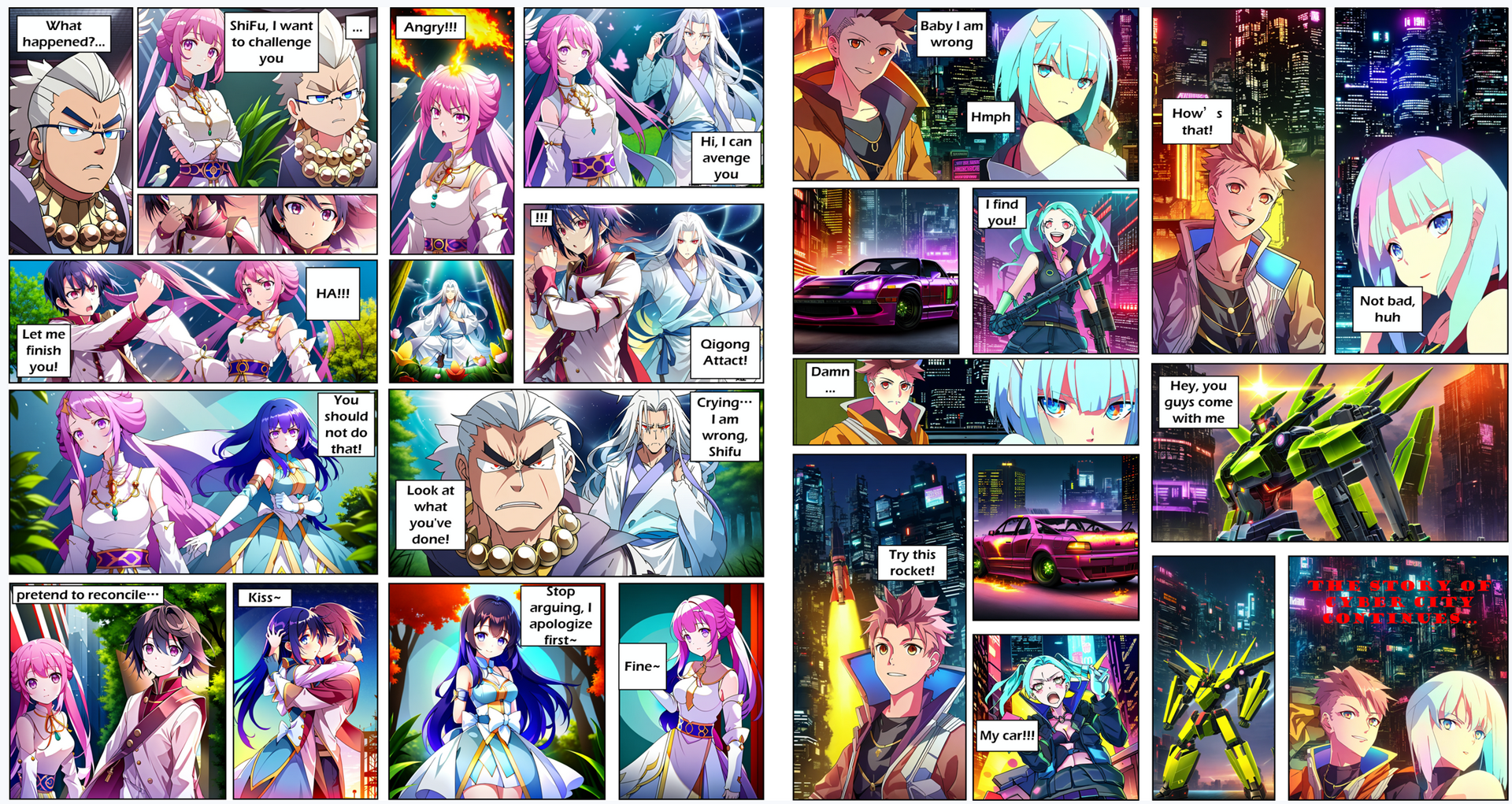StableDiffusion/AutoStudio
What is AutoStudio?
AutoStudio is a novel framework designed to address the challenges of multi-turn interactive image generation, a task requiring models to interact with users over multiple rounds to create a sequence of coherent images By Google NotebookLM
What could AutoStudio do?
AutoStudio can be used for several applications, including multi-turn editing, open-ended story and manga book generation By Google NotebookLM

Issues
- Depend on legacy diffusers package
Getting Started
AutoStudio and StoryDiffusion: Key Differences and Capabilities in Multi-Turn Interactive Image Generation
AutoStudio and StoryDiffusion are both cutting-edge methods for generating images from text, but they differ significantly in their approaches to multi-turn interactive image generation. Here’s a comparative analysis:
StoryDiffusion
- Input Requirements: Requires a complete story as input to generate multiple images simultaneously. This limits its flexibility for on-the-fly interaction and individual image editing.
- Image Generation: Generates all images in a batch, potentially sacrificing the quality of individual images compared to generating them sequentially.
- Attention Module: Employs a “hot-pluggable” attention module to incorporate role features, suggesting an attempt to maintain consistency in character portrayal throughout the story.
AutoStudio
- Interaction: Designed for on-the-fly interaction with users, allowing for more dynamic and flexible image generation.
- Multi-Agent Framework: Consists of four specialized agents:
- Subject Manager: Interprets user dialogues, identifies subjects, assigns contexts, and generates image captions.
- Layout Generator: Creates bounding boxes for each subject to control their location within the image.
- Supervisor: Refines and corrects layouts generated by the Layout Generator.
- Drawer: Based on Stable Diffusion, generates the final image based on the refined layout and information from the Subject Database.
- Parallel-UNet (P-UNet): Introduces a P-UNet in the Drawer agent to enhance the processing of subject-aware features from text and image embeddings.
- Subject-Initialized Generation: Employs a subject-initialized generation method to improve control over subject placement, potentially reducing issues like missing or erroneously fused subjects in the final image.
Key Advantages of AutoStudio
- Multi-Subject Consistency: Demonstrates superior performance in maintaining consistency among multiple subjects across multiple turns of interaction. This is evident in its significantly better performance on average character-character similarity (aCCS) compared to StoryDiffusion and other methods on the CMIGBench benchmark.
- On-the-Fly Interaction and Editing: Excels in interactive scenarios, allowing users to provide input, make adjustments, and edit images on the fly. This makes it well-suited for applications like open-ended story or manga book generation where real-time creative input is crucial.
- Subject-Aware Image Generation: The P-UNet and subject-initialized generation method contribute to its ability to better understand and incorporate subject information, resulting in higher-quality images that better reflect user instructions.
Limitations
The source primarily focuses on AutoStudio, offering limited information on the specifics of StoryDiffusion’s approach. Therefore, a more in-depth comparison of their capabilities and limitations, especially concerning aspects like controllability, style transfer, and handling complex compositions, requires further investigation using additional resources.